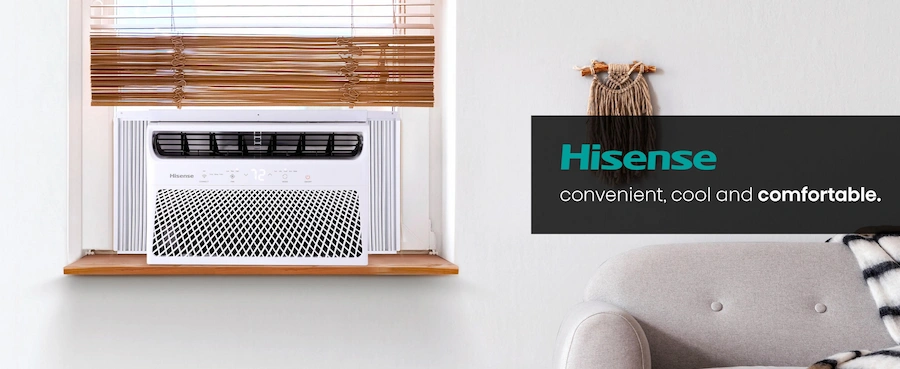
-
Major Chinese electronics brand pushing into smart home climate products
-
Offers budget-friendly window ACs, with Wi-Fi control available in three of the four main series
-
Known for competitive features at surprisingly low prices
-
Smart app integration included even in lower-end models
-
A strong pick for tech-savvy buyers on a budget

-
ENERGY STAR® Certified, Many models meet efficiency standards
-
Low Noise Level, Perfect for bedrooms and offices
-
Smart Features, Wi-Fi connectivity, smart sensors and remote control via Hisense app
-
Voice-Control Ready, Control with Alexa or Google Assistant for seamless operation
-
Washable & Removable Filters, Easy to clean and keeps air fresh
-
3-in-1 Functionality of Cooling, Dehumidifying and Fan-Only
TCL Air Conditioners
TCL is better known in the U.S. for its affordable TVs — and now it’s bringing that same value-driven strategy to window air conditioners. With a focus on Wi-Fi integration, digital control, and clean modern design, TCL’s window ACs have found a niche with younger buyers, first-time apartment renters, and tech-focused consumers who want more than just cold air. Their prices are low, the features look great on paper, and the units are readily available at Amazon, Walmart, and Costco. TCL currently offers four main window AC series — the Q-Series, N-Series, M-Series, and H-Series — each targeting different user needs, from smart-home integration to ultra-simple manual control. But when a company tries to do a lot for a little, something usually gives — so let’s dig in.
Hisense Air Conditioners

Hisense might not be a familiar name in U.S. households, but it’s been quietly gaining ground — not just in TVs, but in air conditioners too. Backed by a massive Chinese manufacturing operation, Hisense ACs are commonly found on the shelves of Walmart, Lowe’s, and Amazon, often priced to undercut bigger-name rivals. Their secret weapon? Inverter technology, quiet performance, and smart app control — all under $500. While not as refined as LG or Friedrich, Hisense is making a serious play in the budget-premium space. Let’s break down what works, and what still needs work.






